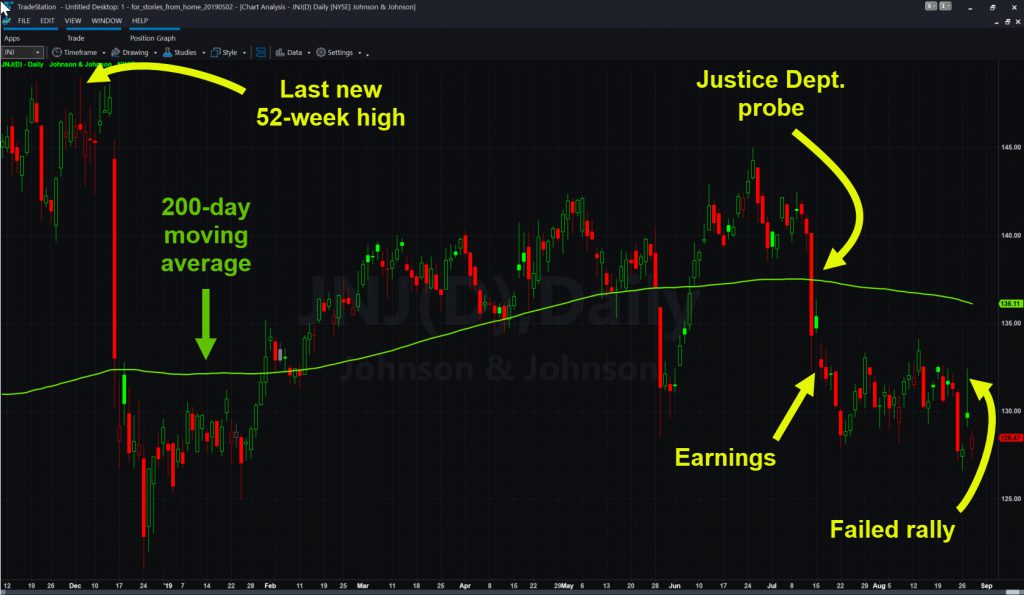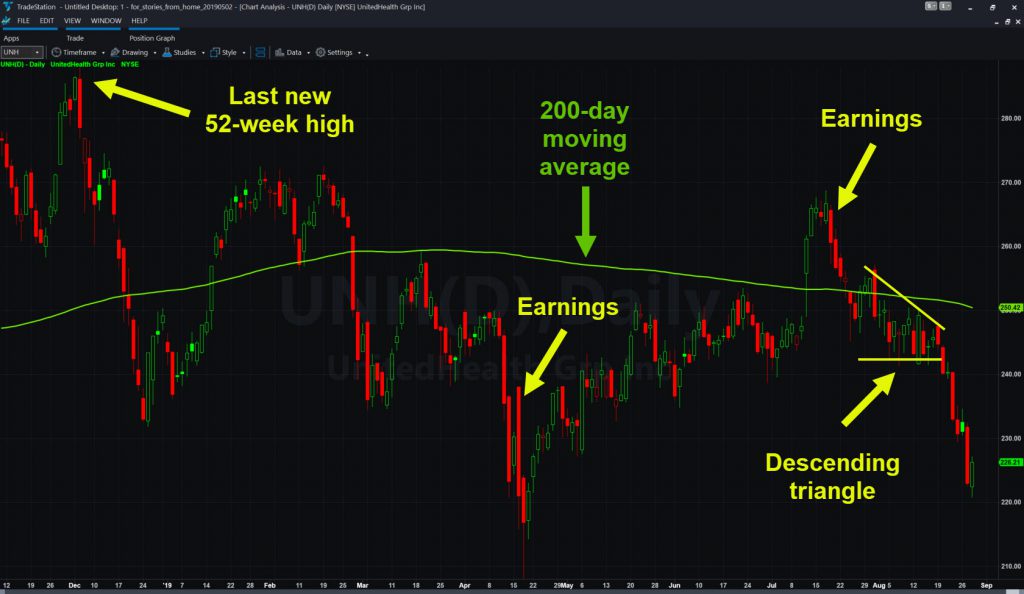Everyone’s focused on tariffs and the global economy. But another potential risk may be emerging: worsening price action in the health-care sector.
Key companies in the SPDR Health Care ETF (XLV) have tried to rally on good news lately, but failed. For example:
- Johnson & Johnson (JNJ) received a smaller-than-expected fine in a big opioid case on Monday. JNJ spiked over $134 in the extended hours immediately after the decision. It rose even less in the usual session before closing near its low of the session. Don’t forget it also fell on July 16 despite reporting better-than-expected earnings and revenue.
- UnitedHealth (UNH), the HMO giant, keeps falling despite strong results. Just look at the price action after beating estimates and raising guidance on July 18, or the failed rally on April 16.
JNJ and UNH are the biggest and third-biggest holdings in XLV. They’re also both members of the Dow Jones Industrial Average. Their inability to respond positively to good news may be a symptom of a wider illness in the sector — selling by large investors.

This is especially true in the current environment of economic uncertainty. Money managers have traditionally viewed health-care stocks as safe-havens that are immune from slowdowns. But this time around, they seem to favor utilities and real estate. (Precious metals are also surging as safe-haven stocks.)
Political and Pricing Risk
Given all the anxiety about Chinese tariffs, Germany’s near-recession and Brexit, health-care stocks ought to be ripping. Their relative weakness should stick out like a sore thumb to investors.
What’s going on? Diagnosing the situation we find a few major bearish conditions facing the industry.
First is political risk. Democrats want to nationalize healthcare in various ways, while the Republican Administration wants to lower prices. Meanwhile, various state governments are circling drug companies with a slew of opioid-related lawsuits.
Then you have the 2020 elections. Few things are certain in life, but it seems very likely that political pressure on health-care companies will only increase over the next 14 months.

Margins at Risk?
The second big risk relates to profit margins, which are getting squeezed from both ends. Drug prices face both political pressure and competitive pressures as Amazon.com (AMZN) elbows its way into the space. Higher wages for lower-income workers also threaten margins across the industry.
Weak margins are a potential concern because some companies have borrowed billions of dollars assuming certain amounts of profit. Those include CVS Health (CVS), Mylan (MYL), Bausch Health (BHC) and Teva Pharmaceuticals (TEVA). Hospital operators like Tenet Healthcare (THC) also have significant debt.
Remember, shareholders receive what’s left after debts are paid. Weak margins mean less residual value. In other words, stock prices tend to suffer.
By the way, medical devices have dodged the bearish forces in their broader sector. Some of those include Medtronic (MDT), Edwards Life Sciences (EW) and Abbot Laboratories (ABT).
In conclusion, health-care stocks are failing to benefit from the safe-haven trade despite falling interest rates. There are few signs of sentiment turning, and potential risk going into next year’s elections. Investors may want to keep some of these trends in mind as they navigate the market in coming months.




























